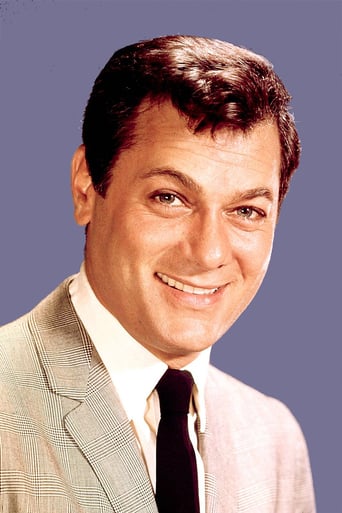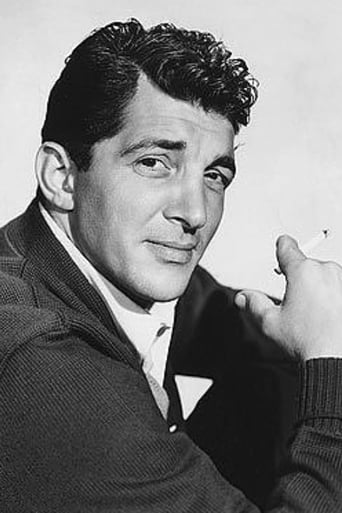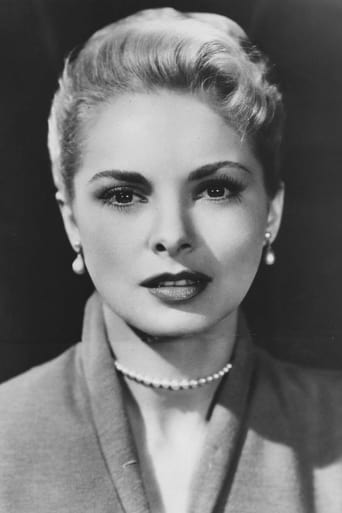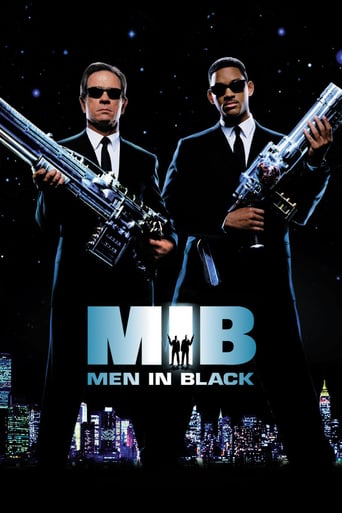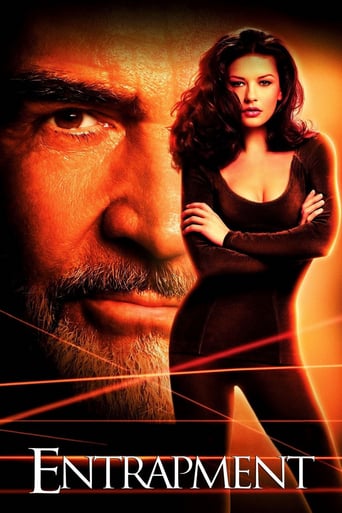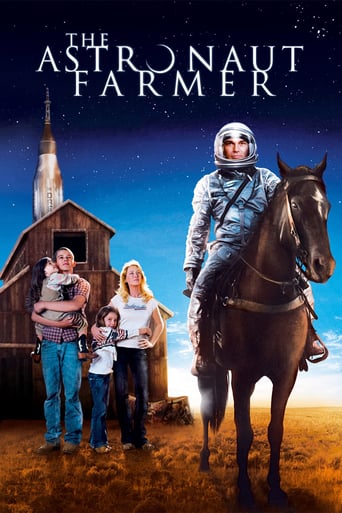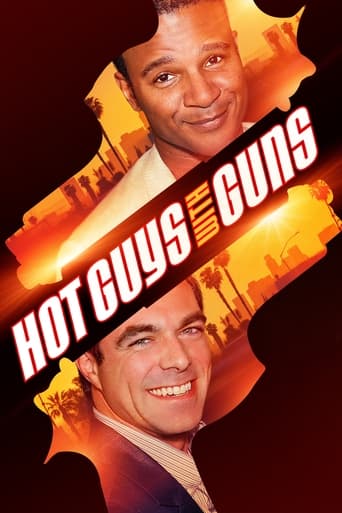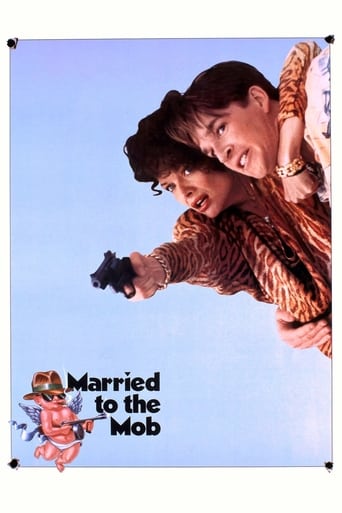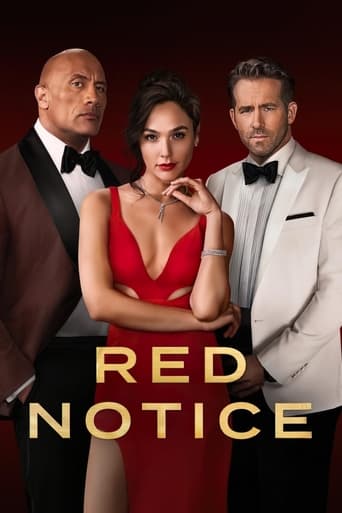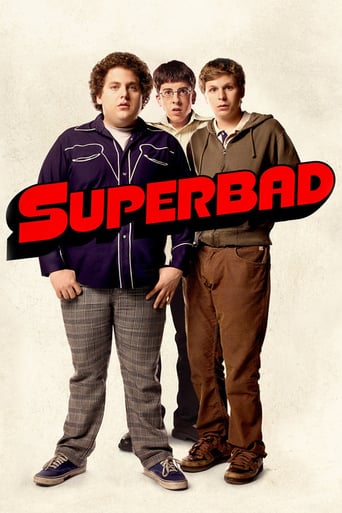
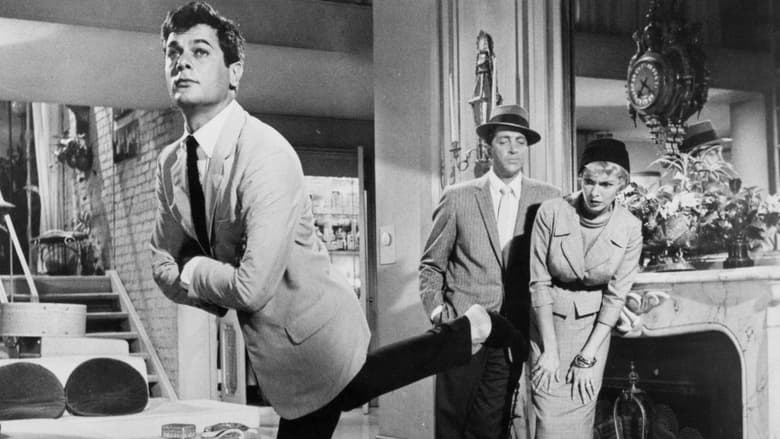
Who Was That Lady? (1960)
In order to get back into the good graces with his wife with whom he has had a misunderstanding, a young chemistry professor concocts a wild story that he is an undercover FBI agent. To help him with his story he enlists the aid of a friend who is a TV writer. The wife swallows the story and the film's climax takes place in the sub-basements of the Empire State Building. The professor and his friend, believing themselves prisoners on an enemy submarine, patriotically try to scuttle the vessel and succeed only in rocking the building.
Watch Trailer
Cast


Similar titles
Reviews
I don't have all the words right now but this film is a work of art.
everything you have heard about this movie is true.
Absolutely Fantastic
The film's masterful storytelling did its job. The message was clear. No need to overdo.
I remember seeing this film around the time it first came out and looking at it again today, I had forgotten how wildly funny it was. In fact listening to my record collection, the thing I had remembered most about Who Was That Lady? was the very good title song that Dean Martin sung and had a record of which sold a few platters back in the day.But the film itself is a hilarious Cold War spy farce. It's based on a Norman Krasna play that ran for 208 performances on Broadway in 1958 with the slightly elongated title of Who Was That Lady I Saw You With. On Broadway the roles played by Tony Curtis, Janet Leigh, and Dean Martin were done by Peter Lind Hayes, Mary Healy, and Ray Walston.It all begins when chemistry professor at Columbia University Tony Curtis is caught by wife Janet Leigh in fast embrace with a foreign exchange student. She's back to their apartment and packing her bags for Reno. Curtis who really loves his wife is in a terrible state, what to do?Depending on how you look at it, long time pal Dean Martin is eager to help. He's a television writer for CBS and he's good with figuring out plot explanations. Mainly because Curtis is convinced Leigh just won't believe that the foreign exchange student was kissing him in gratitude. So what do these two knuckleheads conceive? That Curtis was kissing the girl in the line of duty because he's an undercover agent for the FBI. In fact they get an FBI card printed up and a gun from the prop department at CBS. And to further 'aid' the story, Martin gets Curtis to get four dots tattooed on his heel as he did back in his fraternity days. Isn't that what all FBI agents have.But when Leigh buys the story all too well and the printer goes to the real FBI when the card doesn't show up on the CBS program as Martin said it would, the fun really starts. Even a pair of chuckleheaded Russian agents played by Simon Oakland and Larry Storch actually believe Curtis is an FBI man working on a super secret project at Columbia.The biggest change from stage to screen had to be Dean Martin for Ray Walston. Certainly Dean is far more believable as the wolfish television writer, but there are some outrageous comedy bits that Martin has that I could definitely see Ray Walston doing on stage.This was the last screen pairing of Tony Curtis and Janet Leigh, within three years a Hollywood storybook marriage would be at an end. Janet has her innings in this film also especially in the restaurant tailing her husband and Martin who has set him up on a double date with the Coogle Sisters, a pair of foreign agents from Brooklyn. All I can say there is that there is no doubt that these two had to contain four weapons of mass destruction in the persons of Joi Lansing and Barbara Nichols.A lot of the problem is caused by FBI agent James Whitmore who after interviewing Leigh first, realized what was going on, but decided to hold off until he could get Curtis alone. Whitmore plays the part as a good foil for Leigh's ingenuousness. Of course Whitmore has to answer to his field office boss John McIntire who in turn has to answer to you know who in Washington.It all ends quite uproariously in the basement of the Empire State Building when Curtis and Martin think they're on a submarine and proceed to try and 'sink' it. Got to be seen to be believed.
A trio of major stars, close to their peak of fame at the time, help to enliven this overdrawn farce based on a moderately successful Broadway play. Curtis is a university scientist who is canoodling with a female student when his wife Leigh walks in and catches him. In no time flat, she is packing for Reno to get a divorce and orders him out of the house by 7:00pm. Curtis's pal Martin, a writer for CBS television, helps to concoct a scheme designed to fool Leigh into calling off the split. He aids Curtis in convincing Leigh that they are FBI agents and that the girl being smooched was just a small part of a much bigger plan. After some deliberation, Leigh falls for the story, but thanks to a loose end from the props department at CBS, the real FBI gets involved and things become more and more convoluted and complicated from there. Curtis is appropriately manic and desperate as he tries to inject a sense of imperativeness to the silly and unrealistic plot. Playing a cheating husband couldn't have been too great a stretch for him as he admitted to fooling around on Leigh many times during their real life marriage and, in fact, would leave her for a younger girl only two years after this. Martin appears to be investing his role with a little more conviction than he would later in his Matt Helm series and tries to add texture to his performance (or is he just trying to steal focus?) by fiddling often with props. He's mostly second fiddle to Curtis, but does get to toss out a few zesty lines now and then. Leigh (saddled with an unflatteringly tousled hairdo) overacts with abandon in order to keep up with the guys' zaniness. She cuts a nice figure in her black cocktail dress, but has a pretty dense role to play. Fortunately for her, "Psycho" would come out the same year as this and immortalize her forever in a more flattering way. Some strong supporting players, notably Whitmore as a beleaguered FBI agent and Nichols and Lansing as a couple of bottle-blonde pickups, give their all in an effort to liven up the film. Whitmore very wisely underplays his role in contrast to the more broadly acted ones. Unfortunately, the play was dated before too long after its run and the film is badly dated now. The stage origins show through frequently despite attempts to move the action around. Curtis's apartment is interestingly laid out, though very artificial in nature. This was made at a time when the big trend was to involve the Russians (see also Leigh's version of "Bye, Bye Birdie") or to throw in a big, sloppy spectacle such as a pie fight or an overflowing washing machine. Here, the Russians make their obligatory appearance and the unlikely flooding of a New York City landmark accents the climax. It wouldn't be so bad if the script didn't take so long to set things up and dwell on so many unnecessary details along the way, but it would hardly matter because the whole enterprise is both inane and distasteful in any case. There's an odd layer of (unintentional?) homoeroticism dispersed throughout as well, with Curtis and Martin contorting their way through the machinations of the plot and Curtis nearly kissing a male Soviet agent. What it's got are three charismatic stars trying their best and some clean black and white photography, but what it's lacking is a compelling premise that is carried out proficiently.
I was always a Dino fan, still am all these years later, and this film makes me wish he and Tony Curtis had made a couple more of these in the 60s. Conventional wisdom says the real talent in Martin and Lewis was Jerry, and the real talent in Some Like It Hot is Jack Lemmon and not Tony Curtis, but when these two straight men, or at least straighter men, get together, this story gets as wacky as any Hope and Crosby, Martin and Lewis, or Abbott and Costello vehicle. Both guys can be as charming as always and as goofy and funny as their other partners, with Dino running away with a little more of the comedy than Tony. This one is strictly a guy flick, a boy's club guilty pleasure about two friends conspiring to repair a marriage with a made up story of FBI agents and Russian spies and beautiful women, and just has to be funny, especially when the real FBI, James Whitmore and John McIntire, and the real KGB, Simon Oakland and Larry Storch, get wind of it and turn up. Throw in the ever lovely Janet Leigh as Tony's wife, and the pre-silicone/saline implant miracles of Barbara Nichols and Joi Lansing as two blond bimbos Dino wants help schmoozing, and this becomes every post-pubescent boys dream come true comedy of the 60s. It looks like so much fun that you have to believe these people weren't even working when they made it. And just when you think they can't go any farther or get more ridiculous, they set off to "sink" the Empire State Building. These guys could have gotten Kong down without a shot! Without apologies to anyone, I just loved this one!
"Who Was That Lady?" has no deep theme underlying the comedy, but neither do many of the best comedies. This one begins as it ends, with laughter. It's not belly laughs all the way through, but even the laughless parts consist of plot mechanisms that are per se at least amusing and serve as set-ups for later guffaws. There are moments when you'll feel as if you're about to split with laughter.A summary is in order, although it will sound silly. An assistant professor of chemistry at Columbia (Curtis, who lives with his wife, Janet Leigh) in a pad no assistant professor would allow himself to dream of, is caught being kissed by one of his students. Leigh enters his office at the wrong moment, turns on her heel and walks out to go home and begin packing. (All we see of this opening scene are the legs of the three participants.)A desperate Curtis calls his old pal Martin, a writer of TV mysteries, to help him figure out a way to keep his wife. Over drinks of lab alcohol Martin comes up with something like, "I've got it. You know why you were kissing that girl? Because you're a secret agent in the F.B.I. and she's a Russian spy." Curtis believes this is the dumbest story he's ever heard. But Martin pulls down the shades and locks the doors and tells him that he, Martin, is himself an F.B.I. agent, having been trained at Quantico while Curtis thought he was on duty in the Army. Martin even pulls off his sock and shows him four dots tattooed on his heel, the sure sign of a secret agent. "J. Edgar Hoover has five."Curtis is convinced. And Martin begins tattooing his heel with a pen and an electric fan. Queried by a still puzzled Curtis, Martin tells him, "Me? In the F.B.I.? I couldn't even get to be an eagle scout, you jackass." As far as the dots go, Martin doesn't know about Hoover but everybody in his fraternity at Cornell has them. I'm going to avoid going into this because it would spoil things. Suffice it to say that in order to convince Leigh that Curtis really is an F.B.I. agent, Martin goes to his prop department at CBS and has a fake F.B.I. ID card printed and requisitions a pistol. The F.B.I. gets wind of the fake card. So does the C.I.A. So do the Russians. In the end, a drugged Curtis and Martin wake up in the basement of the Empire State Building, believing they've been kidnapped and are aboard a Russian submarine. I swear I'm not making this up. They decide to sacrifice their lives and sink the submarine, which they attempt to do by hugging each other, then turning every valve and faucet in sight, pulling levers, releasing cascades of water, until they short out the electrical circuit of the Empire State Building.I'm going to leave it there, I think. It hasn't appeared much on TV lately, and that's the only reason I can think of why there aren't any previous comments on this hilarious comedy. Really, folks, it doesn't deserve to pass unseen. Everyone in it is at his/her comedic best. Even James Whitmore manages to evoke a sympathetic smile or two. And Barbara Nichols in a small but important role has never been funnier. In a Chinese nightclub, Martin and Curtis promise her a job on TV, a proposition which they argue should be discussed over the course of a weekend at the shore. Nichols excuses herself and phones her agent: "They're talking' about a job," she tells him, "but now they're throwin' in Atlantic City." She and Joi Lansing are the prey in this scene. "Get a load of the way these gals are assembled," Martin mutters to Curtis. And adds: "They sing and dance -- like rabbits."It's not sophisticated but when you come right down to it comedy doesn't really need elegance to be funny. Was Feydeau sophisticated? Was Aristophanes? Was Daffy Duck?


